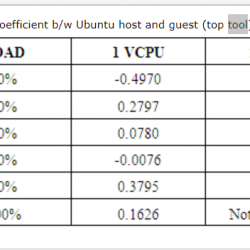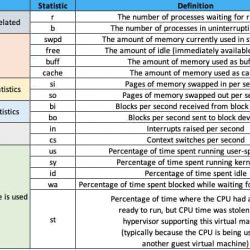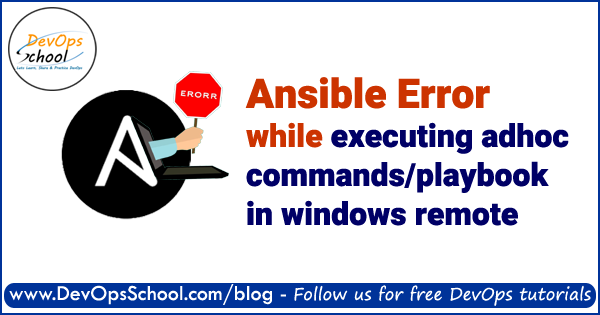
Linux Tutorials: Commands for Linux Administrator
1. sudo – Execute commands with elevated privileges, a fundamental for system administration. 2. useradd – Create a new user account, essential for managing user access. 3. usermod – Modify…
Read more »Top 50 Selendroid interview questions and answers
General Questions Element Identification and Interaction Multiple Device Support Native and Hybrid App Automation WebView Automation Testing Framework Integration Gestures and Actions Test Configuration and Management Error Handling and Debugging…
Read more »
Linux Tutorials: mpstat commands examples
mpstat – Report processors related statistics. The mpstat command writes to standard output activities for each available processor, processor 0 being the first one. Global average activities among all processors…
Read more »
Linux Tutorials: vmstat commands examples
The vmstat command (short for virtual memory statistics) is a built-in monitoring utility in Linux. Users can observe system activity virtually in real-time by specifying a sampling period. The command…
Read more »Docker Tutorials: Detached (-d) mode in Docker – Explained
We use Docker detached mode (-d) when we want to connect to the container in an interactive mode or we can say when we just want application to be running…
Read more »Linux Tutorials: Commands for Linux User
ls – List directory contents. cd – Change the current directory pwd – Print the name of the current working directory. touch – Create an empty file or update the…
Read more »Top 50 Appium interview questions and answers
1) Describe various types of mobile applications Mobile applications are of the following three types: Native Applications: Applications that are created with the help of iOS and Android SDK are…
Read more »
Ansible Connection Options for windows remote Server
Error – Failed to connect to the host via ssh Solution – You need to set ansible_connection=winrm to connect to windows [windows] 13.233.160.153 [windows:vars] ansible_connection=winrm Error – auth method ssl…
Read more »
What is Composer and How to Install Composer?
In my previous article I have explained about the best concept about Laravel in which I mentions what is Laravel and many things about its feature. if you want to…
Read more »
How to upload the artifacts in Sonatype Nexus using Maven
Step 1 – Install and Configure Nexus Server Step 2 – [Nexus Server] Create a nexus role containing all required access of Nexus. Step 3 – [Nexus Server] Create a…
Read more »Replicating claims as headers is deprecated and will removed from v4.0.
Replicating claims as headers is deprecated and will removed from v4.0. Please manually set the header if you need it replicated. When you using Laravel 5.5 and if you will…
Read more »Ansible Adhoc Commands Lab & Excercise – Part 1
Program 1 – Write a Ansible Adhoc Commands to create a group called “deploy How to verify? $ more /etc/group | grep deploy Program 2 – Write a Ansible Adhoc…
Read more »Delete files and folder using batch commands…
rajeshkumar created the topic: Delete files and folder using batch commands… del /s /q bin – deletes all files recursively rmdir bin – delete empty folders.. Regards, Rajesh Kumar Twitt…
Read more »
How to Start and Stop Nagios Core | Nagios Tutorial
Starting Nagios Core Init Script: The easiest way to start the Nagios Core daemon is by using the init script like so: /etc/rc.d/init.d/nagios start Manually: You can start the Nagios…
Read more »
Linux Tutorials: pmap commands examples
You can find the memory used by a program (process) by looking into /proc directory or using standard command such as ps or top. However, you must calculate all memory…
Read more »Linux Tutorials: iostat commands examples
iostat command is a command that used for monitoring system input/output device loading by observing the time the devices are active in relation to their average transfer rates. The iostat…
Read more »
Linux Tutorials: xargs commands examples
Under Development The xargs command is extremely useful when we combine it with other commands.This tutorials explains the usage of xargs command using few simple examples. 1. Xargs Basic Example…
Read more »
Linux Tutorials: mount & unmount commands examples
Once you create a partition, you should use mount command to mount the partition into a mount point (a directory), to start using the filesystem. You need to add the…
Read more »
gsh – Run linux commands on many other linux server at once
gsh – Run linux commands on many other linux server at once Group Shell (also called gsh) is a remote shell multiplexor. It lets you control many remote shells at…
Read more »